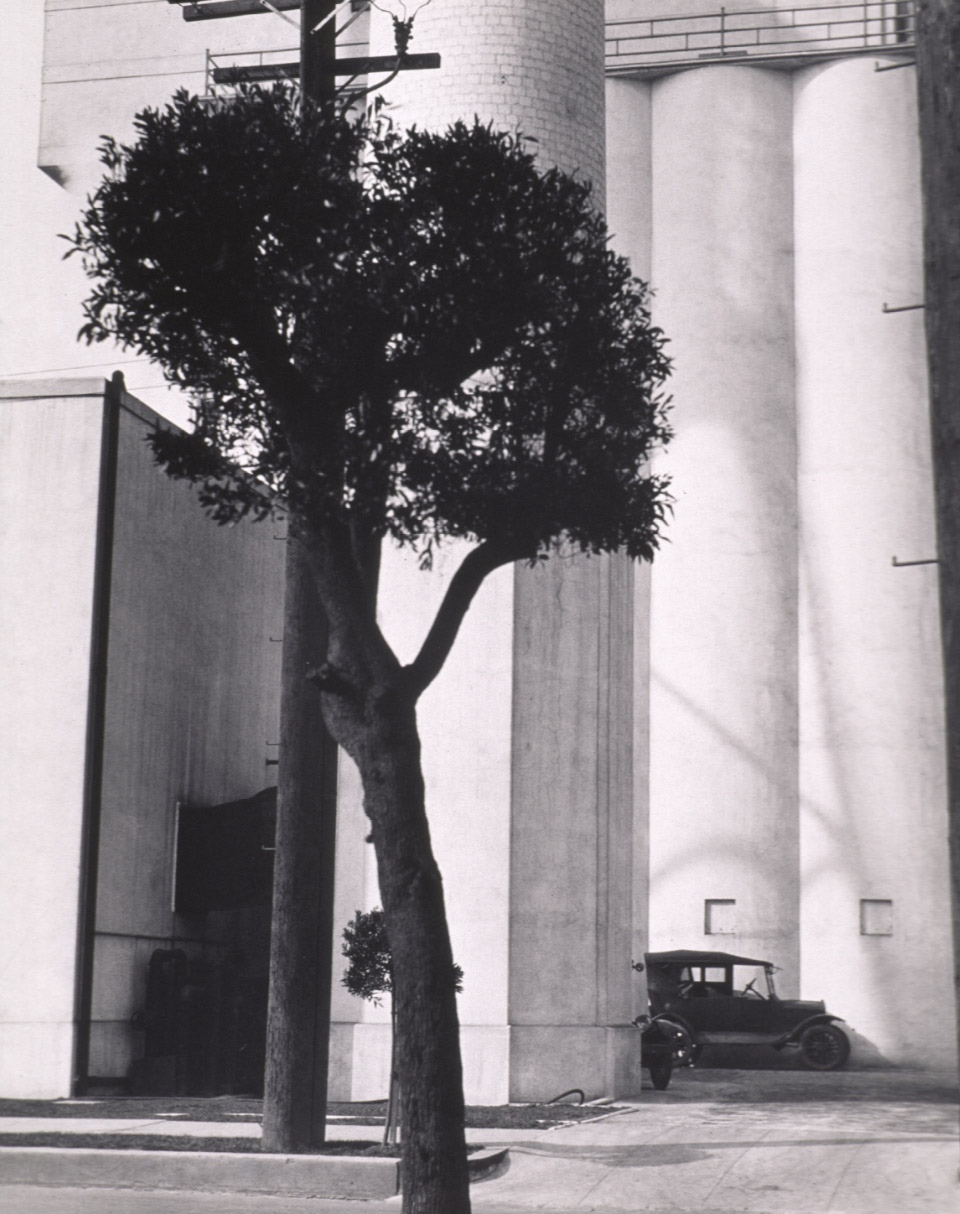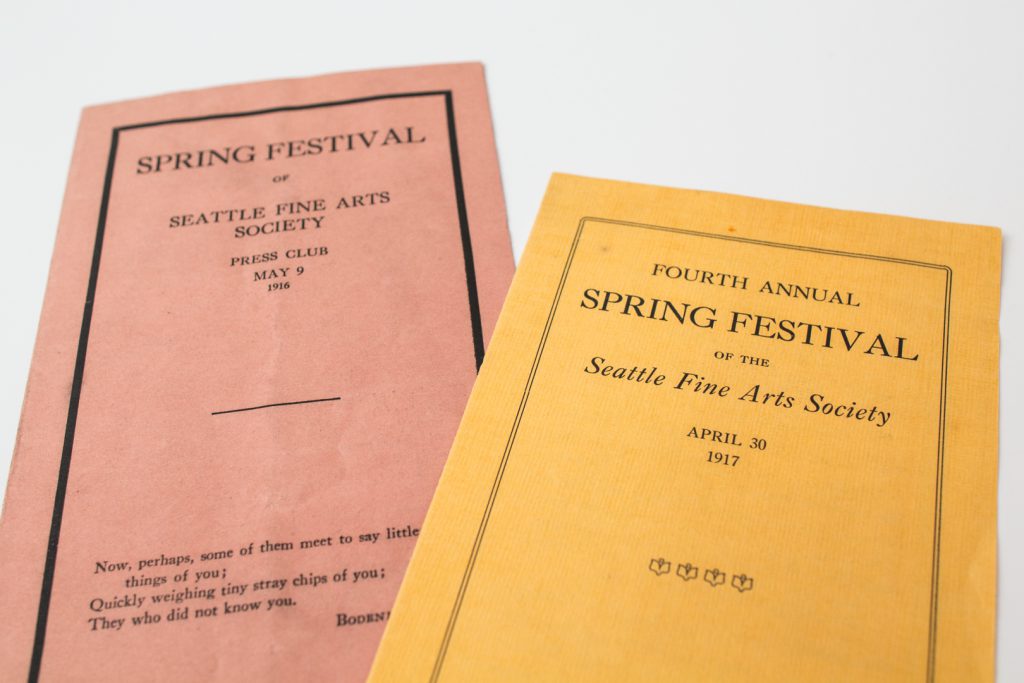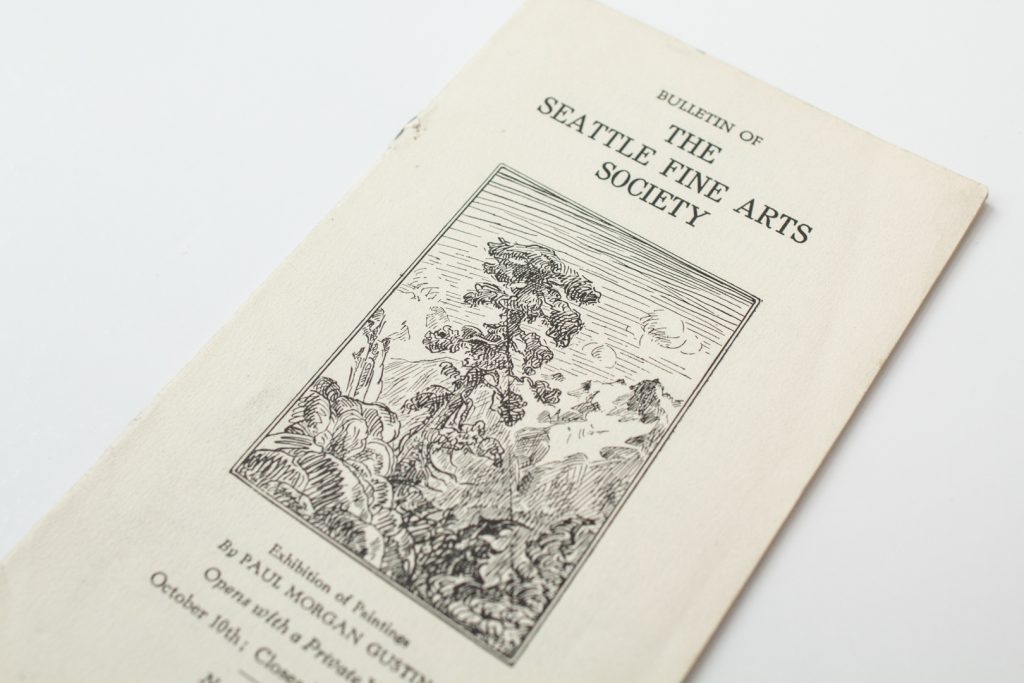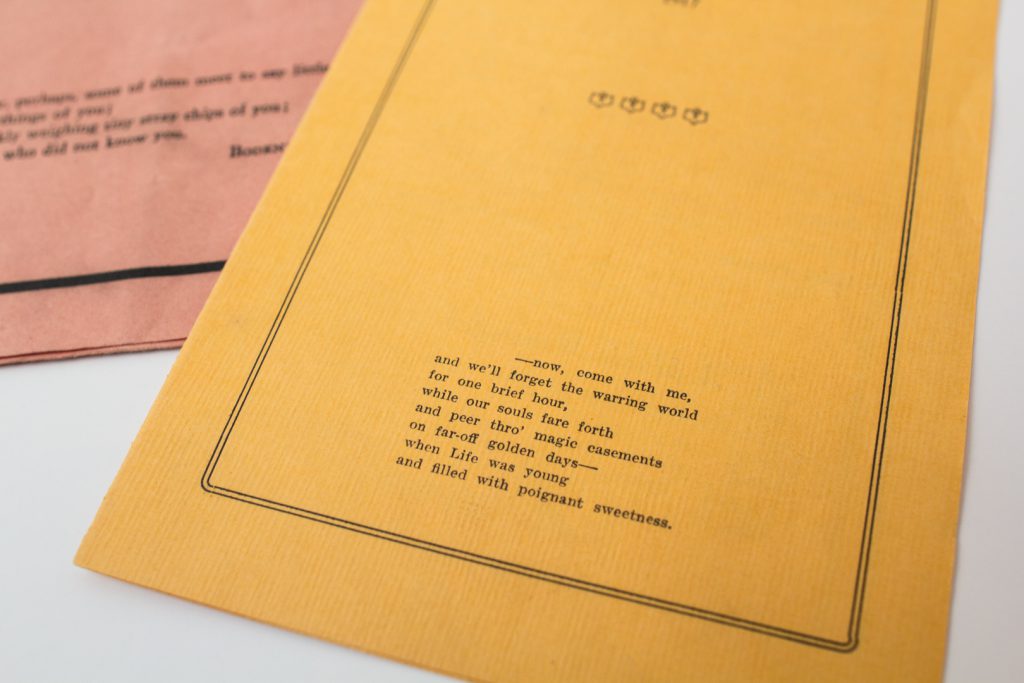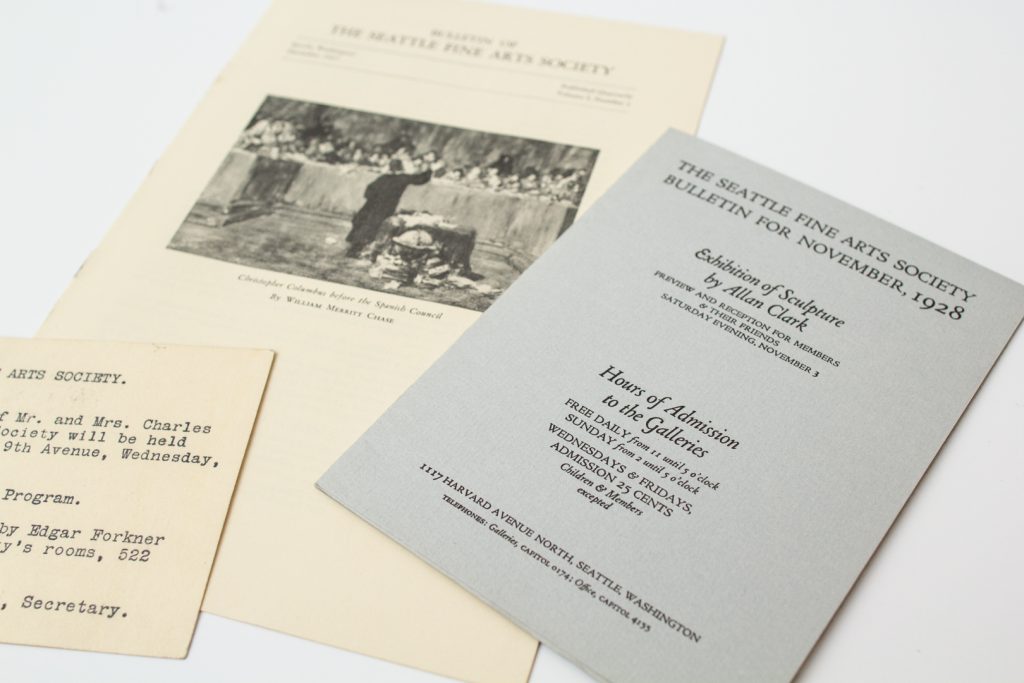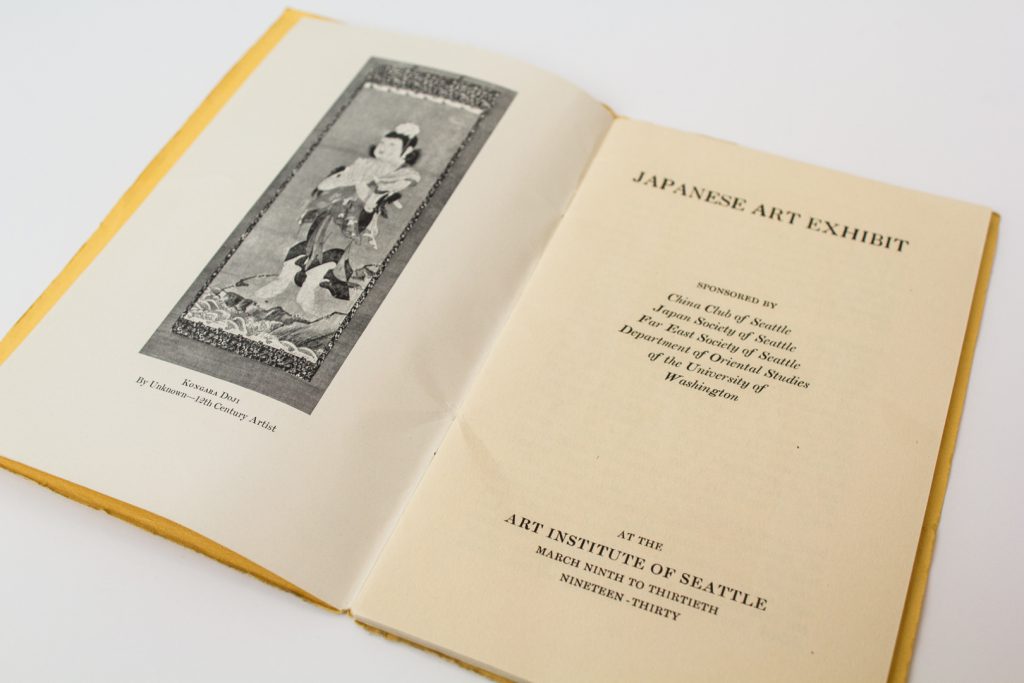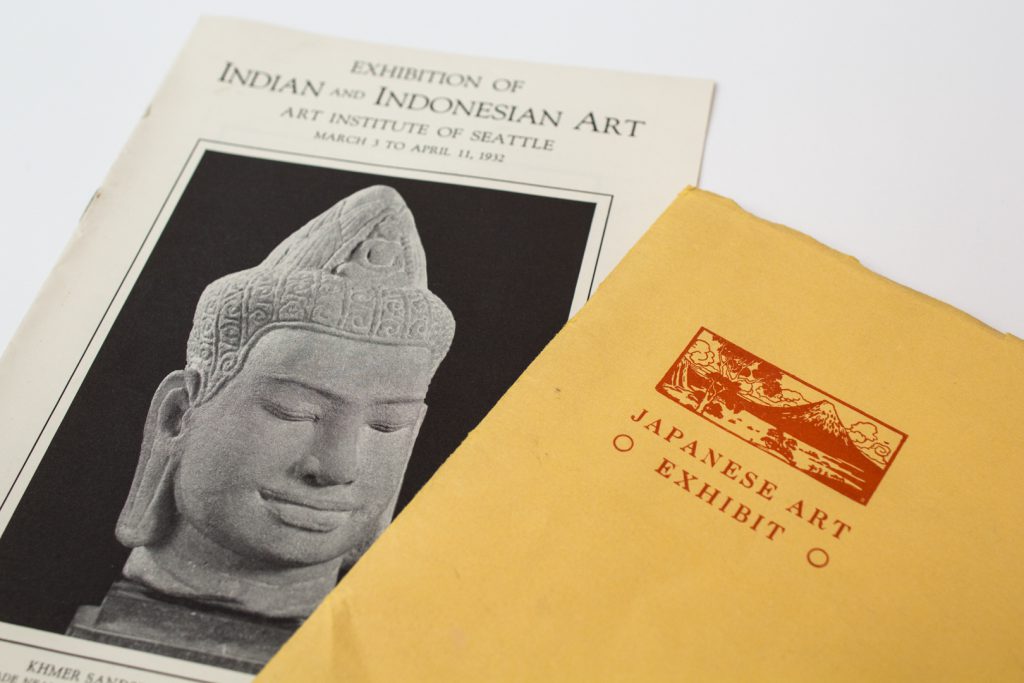Object of the Week: Shredded Wheat Factory with Ford
Photographer Imogen Cunningham (American, 1883–1976) is best known for her portraits, nudes, and photographic examinations of plants. So how does this photograph of a cereal factory fit in?
Born in Oregon in 1883, Cunningham moved with her parents to a communal farm in Port Angeles, Washington as a very young girl. In 1889, the family moved to Seattle creating their homestead in a forest atop Queen Anne Hill. She studied at the University of Washington, receiving a degree in chemistry. Her thesis was titled, “The Scientific Development of Photography,” and she had spent the latter half of her senior year studying the work and methods of Edward S. Curtis. Upon graduation, she was determined to make platinum prints (a photographic printing process using the metal, platinum) and secured a position working in Edward Curtis’s studio from 1907-1909. Although working in his studio, she rarely had contact with Curtis who was often away working on his monumental work, The North American Indian.[1] There she learned not only platinum printing, but also how to spot negatives, create studio portraiture, and run a studio.[2]
After a trip to Europe where she studied with Robert Luther, a renowned photochemist at the Technische Hochschule in Dresden, she returned to Seattle, established her own studio, and began to exhibit and become involved in the Seattle and national art scenes. She was involved with the Society of Seattle Artists, the Pictorial Photographers of America, and, importantly, the Seattle Fine Arts Society.[3] During her time with the Seattle Fine Arts Society, she met and married her artist husband, Roi Partridge, in 1915. A few years later the family (they now had three sons) moved to San Francisco, and then, in 1920, Partridge accepted a position at Mills College and the family moved to Oakland.
Before 1920, Cunningham was firmly part of the Pictorialist movement which had “succeeded in placing photography within the realm of art” and whose work was often associated with beauty and soft focus. The photographs of her husband at Mount Rainier are examples of her working in this style. However, by the late 1920s, Cunningham’s artistic photography had diverged completely from her soft-focus Pictorialist work, and was beginning to express a more fully formed Modernist vision, reducing nature and structures to their simplest shapes and forms.[4] It is during this period and into the 1930s that she becomes associated with the Precisionists, a group who were responding to the radical, industrial changes in the country and turning to machine forms and industrial landscapes as visual resources for their work.[5]
In 1928, living in Oakland, she photographed the Shredded Wheat Factory located at 14th and Union Streets. And, although the factory had been built more than a decade before Precisionism declared beauty in industrial forms, the surrounding community was already thinking about its modern, appealing look:
“Practically no complaint has been heard from nearby property-owners over the location of the million-dollar Oakland factory of the Shredded Wheat Co. on land bounded by Twelfth, Fourteenth, Poplar and Union Streets, in a strictly residential district. It is not expected that the proposed artistic buildings, surrounded by beautiful grounds will have a deteriorating effect on the value of residence holdings.”[6]
The beauty of the industrial landscape is captured in the sleek lines of the factory’s geometric towers and the shadows that extend from known and unknown subjects. And, by including an electrical/telephone poll and a Ford automobile, Cunningham reinforces other aspects of modern life. Other photographs of the site exist in the collections of the Metropolitan Museum of Art, and the Imogen Cunningham Trust (here, here, and here). However, SAM’s Shredded Wheat Factory with Ford is unique in that it’s the only one in the Shredded Wheat Factory series where Cunningham includes a natural object—a tree—front and center within the composition.
In Celina Lunsford’s opening essay for the catalogue to the Imogen Cunningham exhibition at the Fundación Mapfre (Madrid) and Kulturhuset Stockholm, she recognizes: “Imogen Cunningham was a true artist: throughout her long life she embraced the diverse developments of photography and the liveliness of the changing time in which she lived.”[7] Shredded Wheat Factory with Ford, a work of Precisionism, along with Cunningham’s other photographs of various pictorial styles in SAM’s collection, clearly demonstrates her wide range, a lifetime commitment to developing her work, and importance as a pioneering American woman photographer from the West Coast.
– Traci Timmons, SAM Librarian
